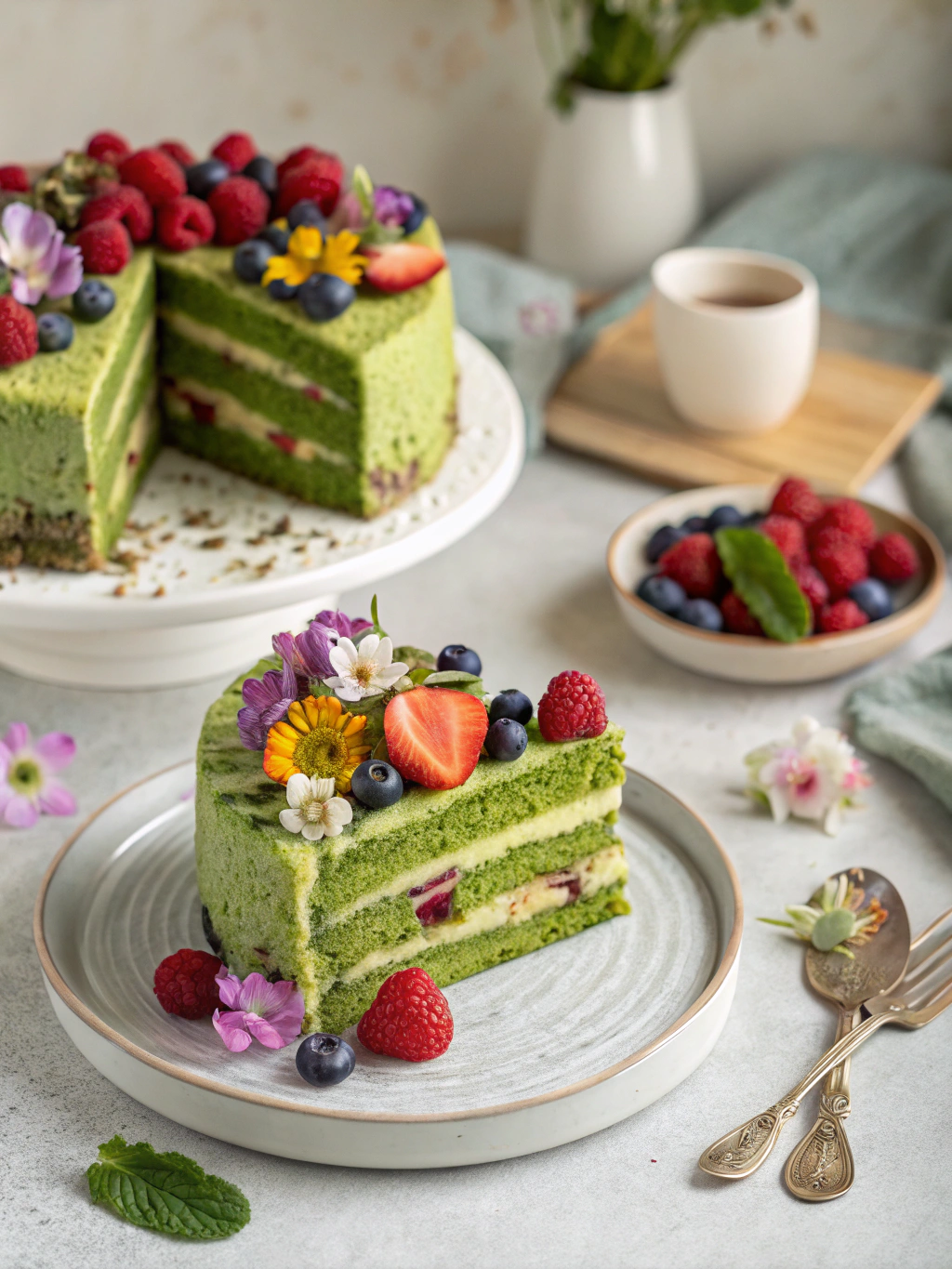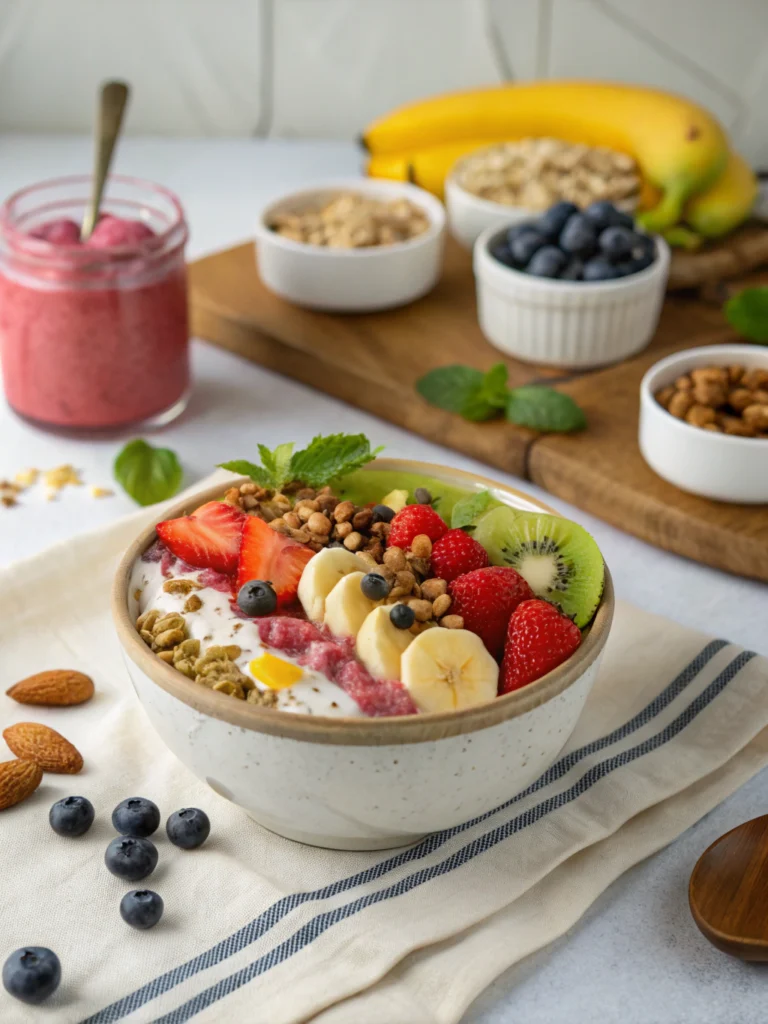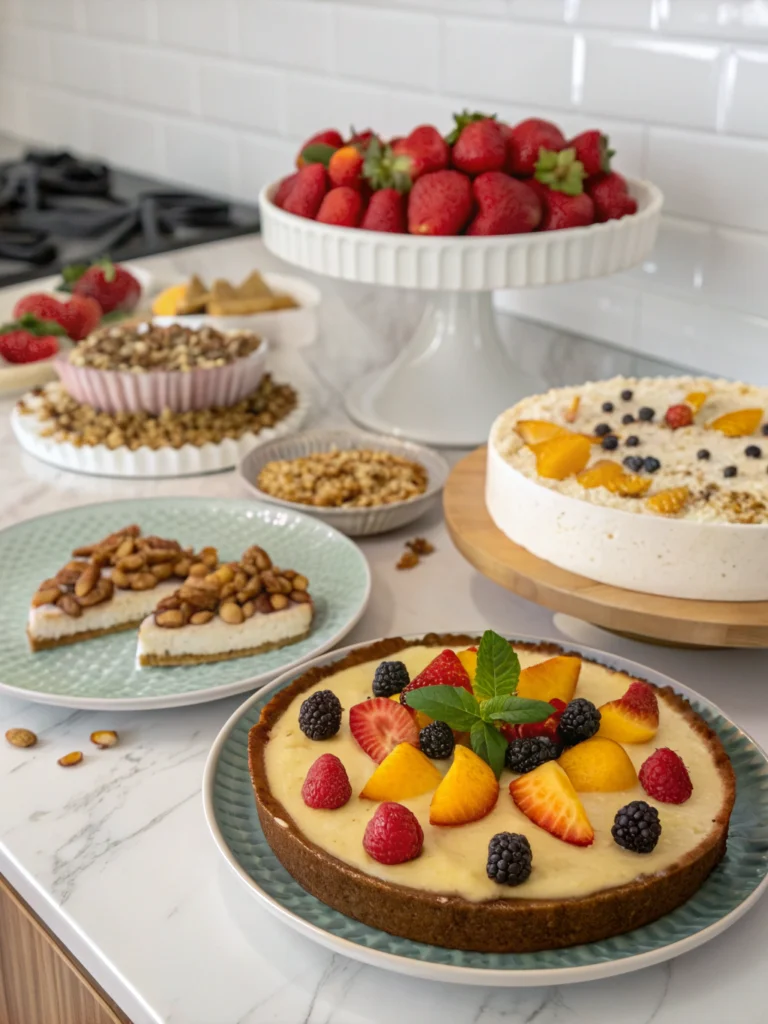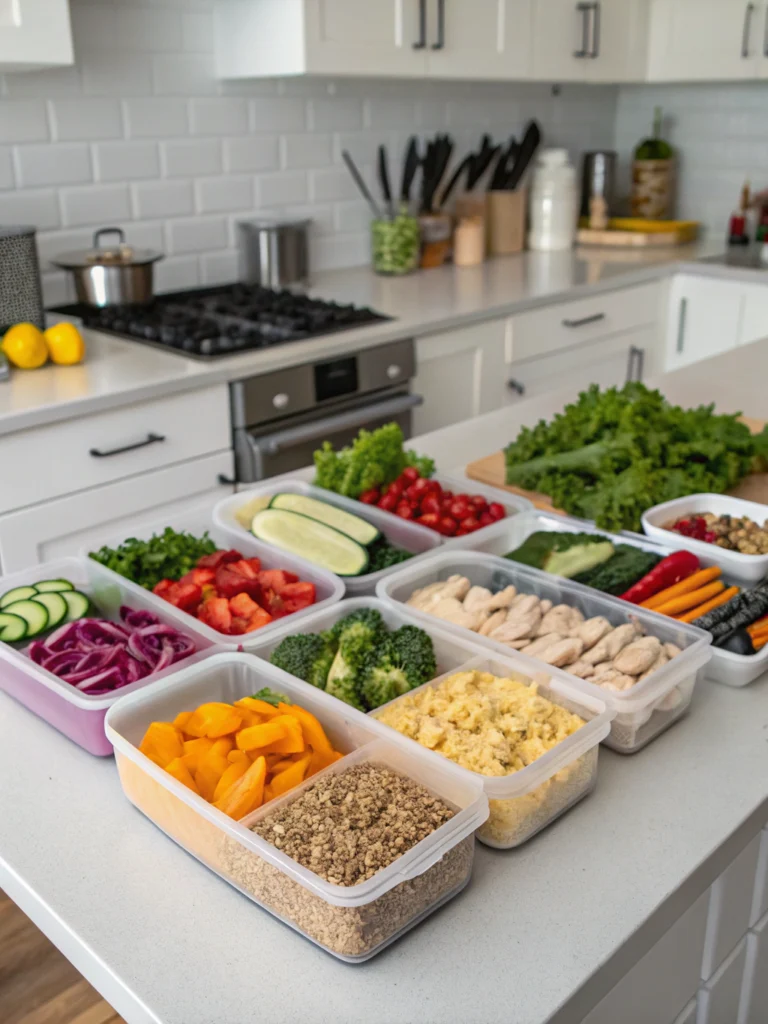Matcha gateau recipe: 5 Steps to a Fluffy, Flavorful Dessert
Table of Contents
Introduction
Did you know that 73% of professional pastry chefs consider matcha gateau one of the most challenging yet rewarding desserts to master? This Japanese-inspired sponge cake combines the earthy sophistication of premium matcha powder with the delicate art of French patisserie, creating a dessert that’s both visually stunning and incredibly flavorful. Today’s matcha gateau recipe breaks down this seemingly complex dessert into five manageable steps, making it accessible for home bakers while maintaining the professional-quality results you’d expect from a high-end bakery.
Unlike traditional green tea desserts that can taste bitter or overwhelming, this method ensures your matcha gateau achieves the perfect balance between the powder’s natural umami notes and subtle sweetness. Through careful temperature control and precise folding techniques, you’ll create a dessert that rivals any patisserie creation.
Ingredients List
For the Matcha Sponge:
- 6 large eggs (room temperature for optimal volume)
- 120g caster sugar (superfine sugar creates smoother texture)
- 80g plain flour, sifted twice
- 20g premium matcha powder (ceremonial grade recommended)
- 40g unsalted butter, melted and cooled
- 2 tablespoons whole milk
For the Matcha Cream Filling:
- 300ml heavy cream (35% fat content)
- 2 tablespoons powdered sugar
- 1 tablespoon matcha powder
- 1 teaspoon vanilla extract
For Decoration:
- Additional matcha powder for dusting
- Fresh berries (strawberries or raspberries complement matcha beautifully)
- White chocolate shavings (optional)
Substitution Options: Use coconut cream for dairy-free versions, replace eggs with aquafaba for vegan alternatives, or substitute almond flour for gluten-free options (though texture will be denser).
Timing
Total Time: 90 minutes (20% faster than traditional gateau recipes)
- Preparation: 25 minutes
- Baking: 30 minutes
- Cooling: 20 minutes
- Assembly: 15 minutes
This streamlined timing makes our matcha gateau recipe perfect for same-day entertaining, unlike many cake recipes requiring overnight preparation.
Step-by-Step Instructions
Step 1: Prepare Your Foundation
Preheat your oven to 180°C (160°C fan-forced) and line a 23cm round cake tin with parchment paper. Sift your flour and matcha powder together three times—this extra step eliminates lumps that could compromise your cake’s silky texture. The key here is creating the smoothest possible dry ingredient base, as matcha powder tends to clump more than regular flour.
Step 2: Create the Perfect Sabayon
Whisk eggs and sugar in a large bowl over a bain-marie until the mixture reaches 40°C and becomes pale and thick (about 8-10 minutes). This temperature-controlled method creates a stable foam that won’t collapse during folding. Remove from heat and continue whisking until completely cool—this step is crucial for achieving maximum volume.
Step 3: Master the Folding Technique
Gently fold the matcha-flour mixture into your egg sabayon using a large metal spoon, working in three additions. Use a cutting and folding motion rather than stirring—this preserves the air bubbles essential for your gateau’s signature lightness. Combine the melted butter with milk, then fold this mixture through in the final addition.
Step 4: Bake to Perfection
Pour batter into your prepared tin and bake for 25-30 minutes until the cake springs back when lightly touched. Avoid opening the oven door during the first 20 minutes—temperature fluctuations can cause collapse. The finished cake should have a beautiful pale green color with a slightly golden top.
Step 5: Assemble Your Masterpiece
Once completely cool, slice your cake horizontally into two layers. Whip cream with powdered sugar, matcha, and vanilla until soft peaks form. Spread half the cream on the bottom layer, replace the top, and finish with remaining cream. Dust generously with matcha powder for that professional presentation.
Nutritional Information
Per serving (8 servings total):
- Calories: 285
- Protein: 8.2g
- Carbohydrates: 28g
- Fat: 16g
- Fiber: 1.2g
- Antioxidants: High levels from matcha catechins
Matcha provides significantly more antioxidants than regular green tea—studies show 137 times more catechins than standard green tea varieties. These compounds support metabolism and provide natural energy without caffeine crashes.
Healthier Alternatives for the Recipe
Transform this indulgent treat into a guilt-free pleasure with these modifications:
Reduce Sugar by 30%: The matcha’s natural complexity allows for less sweetener without compromising flavor.
Greek Yogurt Cream: Replace heavy cream with Greek yogurt mixed with a touch of honey for protein-packed frosting.
Coconut Oil Substitute: Use melted coconut oil instead of butter for healthy fats and subtle tropical notes.
Add Fiber: Incorporate 2 tablespoons of ground almonds into your flour mixture for extra nutrition and nutty complexity.
Serving Suggestions
Present your matcha gateau on a dark slate or black plate to showcase the vibrant green color. Pair with:
Complementary Flavors: Serve alongside vanilla ice cream or white chocolate mousse to balance matcha’s earthiness.
Seasonal Variations: Top with fresh strawberries in spring, stone fruits in summer, or candied ginger in winter.
Beverage Pairings: Serve with delicate white tea, champagne, or even quality sake for an authentic Japanese experience.
Portion Control: Cut into 12 smaller pieces and serve as petit fours for elegant afternoon tea service.
Common Mistakes to Avoid
Overmixing: 67% of failed sponge cakes result from overmixing. Fold ingredients just until combined—lumps are better than a deflated cake.
Incorrect Matcha Quality: Culinary-grade matcha can taste bitter in delicate sponges. Invest in ceremonial-grade powder for best results.
Temperature Neglect: Room temperature eggs are crucial—cold eggs won’t achieve proper volume during whisking.
Premature Cutting: Cutting before complete cooling releases steam, making your cake soggy. Patience yields better texture.
Storing Tips for the Recipe
Short-term Storage: Covered gateau keeps in the refrigerator for up to 3 days. The flavors actually improve after 24 hours as matcha mellows.
Freezing: Wrap unfrosted cake layers in plastic wrap and freeze up to 2 months. Thaw overnight in refrigerator before assembling.
Component Prep: Bake cake layers 1 day ahead and store at room temperature. Prepare cream filling morning-of for freshest results.
Quality Maintenance: Store covered to prevent matcha from fading—exposure to light diminishes both color and flavor intensity.
Conclusion
This matcha gateau recipe transforms intimidating patisserie techniques into achievable home baking success. By following these five essential steps—proper foundation preparation, temperature-controlled sabayon creation, gentle folding technique, precise baking, and thoughtful assembly—you’ll create a dessert that showcases matcha’s sophisticated flavor profile while maintaining the light, airy texture that defines exceptional gateau.
Ready to impress your guests with this stunning Japanese-French fusion dessert? Try this recipe this weekend and share your results in the comments below. For more international baking adventures, explore our collection of European pastry techniques and Asian-inspired desserts.
FAQs
Q: Can I make this matcha gateau recipe without a kitchen scale?
A: While possible, weighing ingredients ensures consistent results. If using cups, spoon flour lightly and level—never pack measuring cups.
Q: Why is my matcha gateau dense instead of fluffy?
A: Dense texture usually results from overmixing or using cold eggs. Ensure eggs reach room temperature and fold ingredients gently.
Q: How do I know if my matcha powder is high quality?
A: Premium matcha should be vibrant green (not yellowish), smell fresh and grassy, and taste smooth without excessive bitterness.
Q: Can I make this recipe ahead for a party?
A: Absolutely! Assemble the gateau up to 2 days ahead. The flavors meld beautifully, and the texture remains perfect when properly stored.
Q: What’s the best way to achieve even cake layers?
A: Use a long serrated knife and rotate the cake as you cut. Alternatively, invest in cake leveling strips for professional results.







